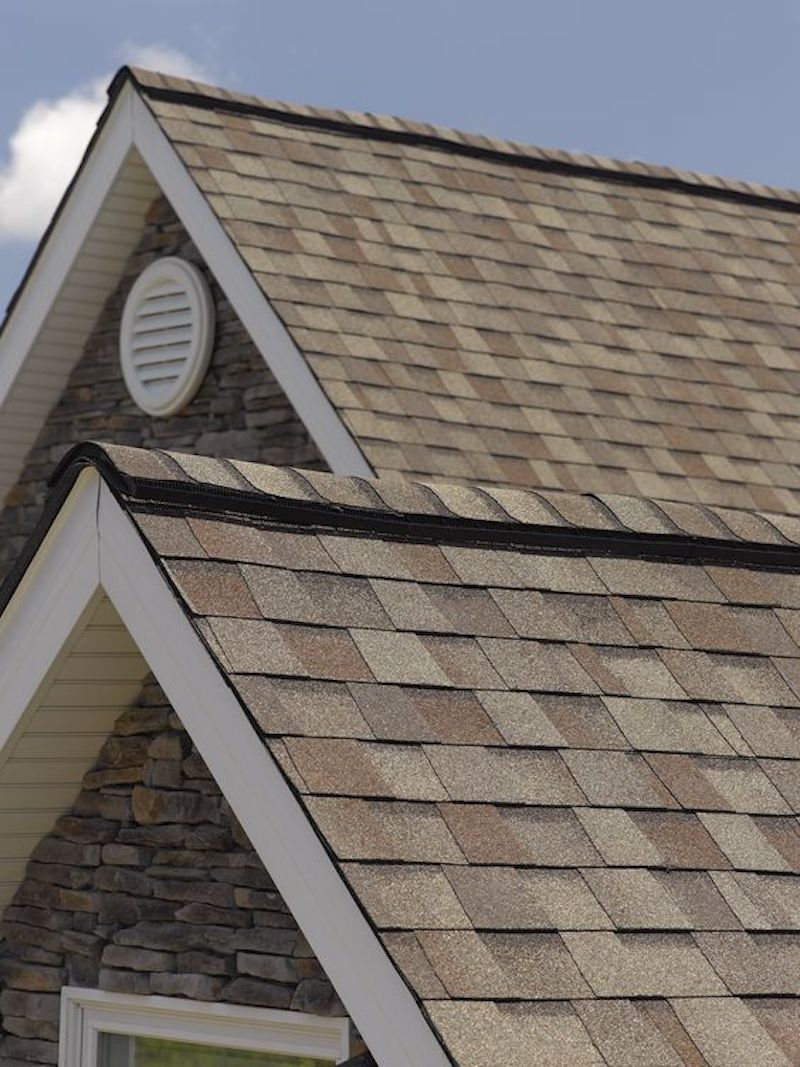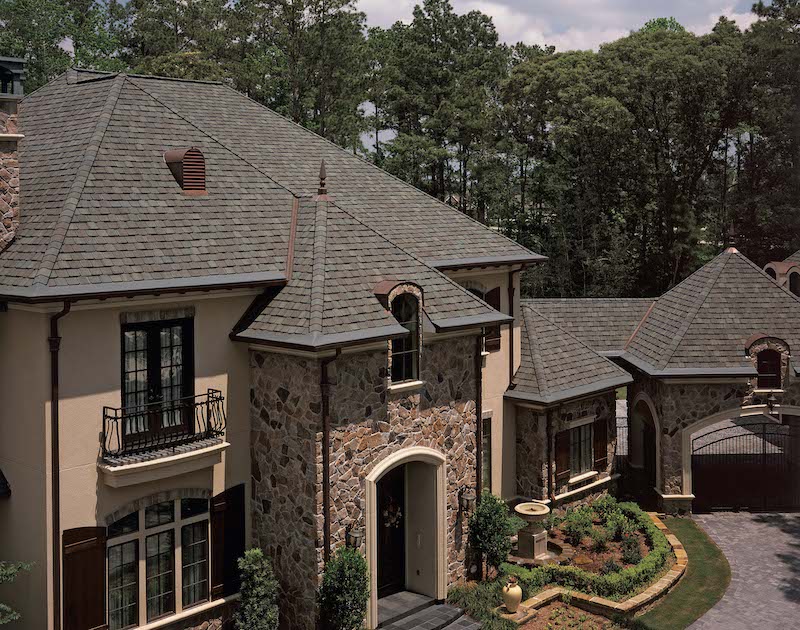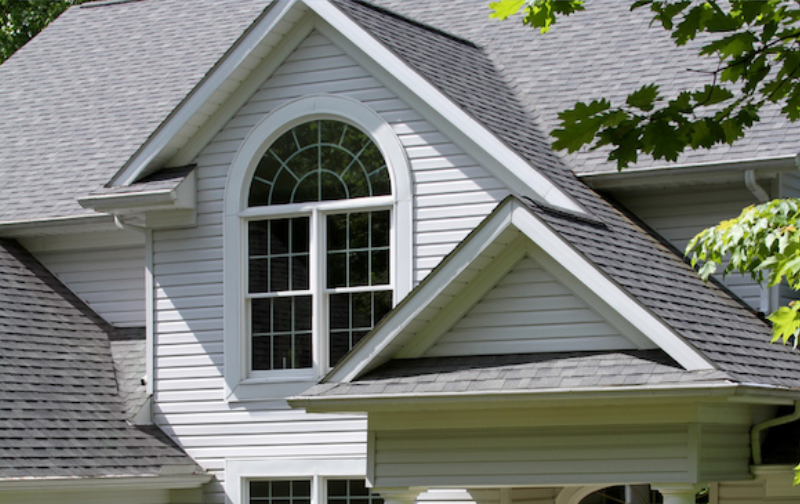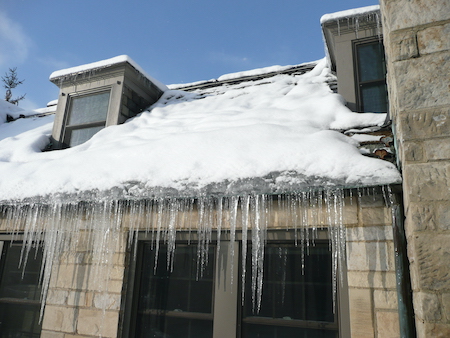Roofing Glossary
In order to give you the information you need to make the best decision on the right roofing for you, and to keep you informed throughout the roofing process, Hi-Tech Windows & Siding has put together this glossary of roofing terms. We encourage you to look through it and acquaint yourself with some of the terminology that our staff will use during our work with you. If you have any questions, be sure to call Hi-Tech Windows & Siding, the top choice for roofing and replacement windows in Andover and beyond.
- Asphalt: A bituminous waterproofing agent applied to roofing materials during manufacturing. Asphalt plastic roofing cement: An asphalt-based cement used to bond roofing materials, including flashing.
- Base flashing: That portion of the flashing attached to or resting on the deck to direct the flow of water onto the roof covering.
- Blisters: Bubbles that may appear on the surface of asphalt roofing after installation.
- Built-up roof: A flat or low-sloped roof consisting of multiple layers of asphalt and ply sheets.
- Butt edge: The lower edge of the shingle tabs.
- Caulk: To fill a joint with mastic or asphalt cement to prevent leaks.
- Coating: A layer of viscous asphalt applied to the base material into which granules or other surfacing is embedded.
- Collar: Pre-formed flange placed over a vent pipe to seal the roof around the vent pipe opening. Also called a vent sleeve.
- Counter flashing: That portion of the flashing attached to a vertical surface to prevent water from migrating behind the base flashing.
- Course: A row of shingles or roll roofing running the length of the roof.
- Cricket: A peaked saddle construction at the back of a chimney to prevent accumulation of snow and ice and to deflect water around the chimney.
- Cutout: The open portions of a strip shingle between the tabs.
- Deck: The surface installed over the supporting framing members to which the roofing is applied.
- Dormer: A framed window unit projecting through the sloping plane of a roof.
- Downspout: A pipe for draining water from roof gutters. Also called a leader.
- Drip edge: A non-corrosive, non-staining material used along the eaves and rakes to allow water run-off to drip clear of underlying construction.
- Eaves: The horizontal, lower edge of a sloped roof.
- Eave flashing: Additional layer of roofing material applied at the eaves to help prevent damage from water back-up.
- Edging strips: Boards nailed along eaves and rakes after cutting back existing wood shingles to provide secure edges for reroofing with asphalt shingles.
- Feathering strips: Tapered wood filler strips placed along the butts of old wood shingles to create a level surface when reroofing over existing wood shingle roofs.
- Felt: Fibrous material saturated with asphalt and used as an underlayment or sheathing paper.
- Fiberglass mat: An asphalt roofing base material manufactured from glass fibers.
- Flashing: Pieces of galvanized metal (usually aluminum or copper) or roll roofing used to prevent seepage of water into a building around any intersection or projection in a roof such as vent pipes, chimneys, adjoining walls, dormers and valleys.
- Free-tab shingles: Shingles that do not contain factory-applied strips or spots of self-sealing adhesive.
- Gable: The upper portion of a sidewall that comes to a triangular point at the ridge of a sloping roof.
- Gable roof: A type of roof containing sloping planes of the same pitch on each side of the ridge, with a gable at each end.
- Gambrel roof: A type of roof containing two sloping planes of different pitch on each side of the ridge. The lower plane has a steeper slope than the upper. Contains a gable at each end.
- Granules: Ceramic-coated colored crushed rock that is applied to the exposed surface of asphalt roofing products.
- Gutter: The trough that channels water from the eaves to the downspouts.
- Hip: The inclined external angle formed by the intersection of two sloping roof planes. Runs from the ridge to the eaves.
- Hip roof: A type of roof containing sloping planes of the same pitch on each of four sides. Contains no gables.
- Hip shingles: Shingles used to cover the inclined external angle formed by the intersection of two sloping roof planes.
- Ice dam: Condition formed at the lower roof edge by the thawing and re-freezing of melted snow on the overhang. Can force water up and under shingles, causing leaks.
- Interlocking shingles: Individual shingles that mechanically fasten to each other to provide wind resistance.
- Laminated shingles: Strip shingles containing more than one layer of tabs to create extra thickness. Also called three-dimensional shingles or architectural shingles.
- Lap: To cover the surface of one shingles or roll with another.
- Lap cement: An asphalt-based cement used to adhere overlapping plies of roll roofing.
- Mansard roof: A type of roof containing two sloping planes of different pitch on each of four sides. The lower plane has a much steeper pitch than the upper, often approaching vertical. Contains no gables.
- Masonry primer: An asphalt-based primer used to prepare masonry surfaces for bonding with other asphalt products.
- Mineral-surfaced roofing: Asphalt shingles and roll roofing that are covered with granules.
- Nesting: A method of reroofing with new asphalt shingles over old shingles in which the top edge of the new shingle is butted against the bottom edge of the existing shingle tab.
- No-cutout shingles: Shingles consisting of a single, solid tab with no cutouts.
- Open valley: Method of valley construction in which shingles on both sides of the valley are trimmed along a chalk line snapped on each side of the valley. Shingles do not extend across the valley. Valley flashing is exposed.
- Organic felt: An asphalt roofing base material manufactured from cellulose fibers.
- Overhang: That portion of the roof structure that extends beyond the exterior walls of a building.
- Pitch: The degree of roof incline expressed as the ratio of the rise, in feet, to the span, in feet.
- Ply: The number of layers of roofing: i.e. one-ply, two-ply.
- Rafter: The supporting framing member immediately beneath the deck, sloping from the ridge to the wall plate.
- Rake: The inclined edge of a sloped roof over a wall.
- Ridge: The uppermost, horizontal external angle formed by the intersection of two sloping roof planes.
- Ridge shingles or ridge cap: Shingles used to cover the horizontal external angle formed by the intersection of two sloping roof planes.
- Rise: The vertical distance from the eaves line to the ridge.
- Roll roofing: Asphalt roofing products manufactured in roll form.
- Roofing tape: An asphalt-saturated tape used with asphalt cements for flashing and patching asphalt roofing.
- Run: The horizontal distance from the eaves to a point directly under the ridge. One half the span.
- Saturant: Asphalt used to impregnate an organic felt base material.
- Saturated felt: An asphalt-impregnated felt used as an underlayment between the deck and the roofing material.
- Self-sealing shingles: Shingles containing factory-applied strips or spots of self-sealing adhesive.
- Self-sealing strip or spot: Factory-applied adhesive that bonds shingle courses together when exposed to the heat of the sun after application.
- Shading: Slight differences in shingle color that may occur as a result of normal manufacturing operations.
- Sheathing: Exterior grade boards used as a roof deck material.
- Shed roof: A roof containing only one sloping plane. Has no hips, ridges, valleys or gables.
- Slope: The degree of roof incline expressed as the ratio of the rise, in inches, to the run, in feet.
- Smooth-surfaced roofing: Roll roofing that is covered with ground talc or mica instead of granules (coated).
- Soffit: The finished underside of the eaves.
- Soil stack: A vent pipe that penetrates the roof.
- Span: The horizontal distance from eaves to eaves.
- Square: A unit of roof measure covering 100 square feet. A roof with a field area of 2,500 square feet would be called a 25 square roof.
- Starter strip: Asphalt roofing applied at the eaves that provide protection by filling in the spaces under the cutouts and joints of the first course of shingles.
- Step flashing: Flashing application method used where a vertical surface meets a sloping roof plane.
- Tab: The exposed portion of strip shingles defined by cutouts.
- Telegraphing: A shingle distortion that may arise when a new roof is applied over an uneven surface.
- Top lap: That portion of the roofing covered by the succeeding course after installation.
- Underlayment: Asphalt saturated felt used beneath roofing to provide additional protection for the deck.
- Valley: The internal angle formed by the intersection of two sloping roof planes.
- Vapor retarder: Any material used to prevent the passage of water vapor.
- Vent: Any outlet for air that protrudes through the roof deck such as a pipe or stack. Any device installed on the roof, gable or soffit for the purpose of ventilating the underside of the roof deck.





